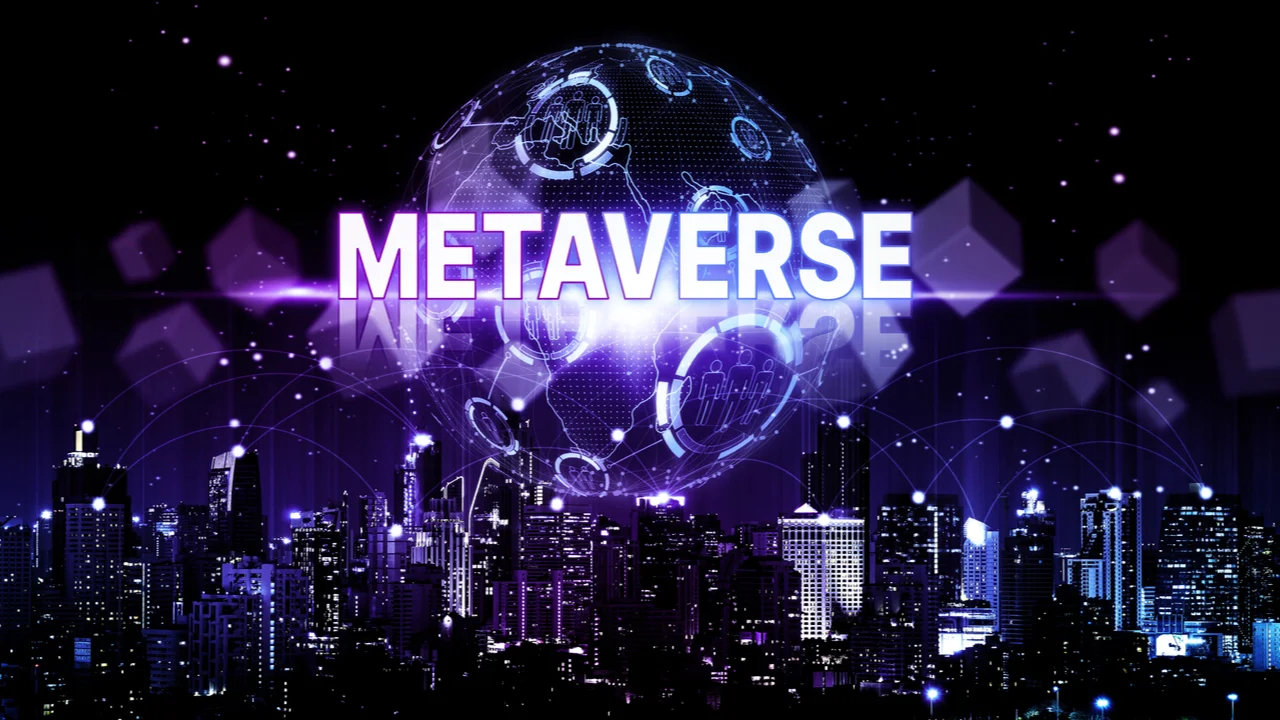
Imagine a world where you can purchase a virtual plot of land or a rare digital item with just a scan of your fingerprint or a quick glance at your phone. This isn't a scene from a sci-fi movie; it's the emerging reality of the metaverse, a persistent, 3D virtual world with immense economic and social potential. However, as we step into this digital frontier, ensuring security and trust becomes paramount. Enter blockchain technology, a revolutionary tool poised to redefine our interactions and transactions within the metaverse.
Demystifying Blockchain: The Foundation of Trust
So, what exactly is blockchain technology? At its core, blockchain is a distributed ledger technology that ensures transparency and immutability of data. Think of it as a digital ledger that records every transaction across a network of computers. This ledger is decentralized, meaning no single entity has control over the entire chain, which significantly enhances security and trust.
The power of cryptography is central to blockchain's security. Each transaction is encrypted and linked to the previous one, creating an unbreakable chain. In the context of the metaverse, this means that virtual assets, such as land, items, and avatars, can be securely owned and transferred without the risk of fraud or counterfeiting.
Moreover, blockchain enables decentralized governance and decision-making within virtual worlds. Instead of a single company or authority making all the rules, the community of users can have a say, promoting fairness and inclusivity. This decentralization is crucial in fostering a vibrant and trustworthy metaverse economy.
Beyond Crypto: The Diverse Applications of Blockchain
While blockchain is often associated with cryptocurrencies like Bitcoin, its applications extend far beyond. In the metaverse, blockchain technology offers several innovative solutions that enhance security, interoperability, and economic dynamics.
One of the significant blockchain applications is secure identity management and user verification. In a virtual world where anonymity can lead to malicious activities, blockchain ensures that users can verify their identities securely and maintain their privacy. This is particularly important for creating a safe and trustworthy environment.
Another critical application is facilitating seamless interoperability between different virtual platforms. Imagine being able to transfer your digital assets, such as virtual clothes or weapons, from one game to another without any hassle. Blockchain makes this possible by providing a standardized framework for asset exchange.
Additionally, blockchain enables new forms of in-world economies and tokenized rewards. Users can earn tokens for participating in activities, which can then be used for in-game purchases or even traded for real-world currency. This creates a dynamic and engaging metaverse where users are rewarded for their contributions.
Building the Metaverse on Blockchain: A Look at Existing Projects
Several pioneering projects are already leveraging blockchain technology to build the metaverse. For instance, Decentraland uses the LAND utility token to represent virtual land ownership. Users can buy, sell, and develop their virtual plots, creating a bustling virtual real estate market.
Similarly, The Sandbox employs the SAND token to facilitate in-game purchases and transactions. Players can create, own, and monetize their gaming experiences, contributing to a vibrant and user-driven virtual world.
Axie Infinity, another popular project, uses the Smooth Love Potion (SLP) token earned through gameplay. Players can breed, battle, and trade their Axies (virtual creatures), creating a thriving virtual economy driven by player participation.
These projects highlight both the opportunities and challenges of building the metaverse on blockchain. While the potential for innovation is immense, issues such as scalability, user adoption, and regulatory compliance need to be addressed to ensure sustainable growth.
The Future of Secure Interactions: Biometric Payments in the Metaverse
As the metaverse continues to evolve, the need for secure and convenient payment methods becomes more critical. This is where biometric payments come into play. Imagine using your fingerprint, iris scan, or facial recognition to make purchases in the metaverse. This technology offers a level of security that traditional passwords or credit cards cannot match.
Biometric payments not only enhance security but also provide a seamless user experience. No more fumbling with passwords or worrying about your credit card details being stolen. However, implementing biometric payments in the metaverse requires robust privacy measures and user consent. Users must have control over their biometric data and trust that it will be used responsibly.
Beyond Security: Building a Responsible Metaverse
While security is a top priority, building a responsible metaverse goes beyond just protecting users. Ethical considerations play a crucial role in the development of this digital frontier. Ensuring inclusivity and accessibility for all users, regardless of their background or abilities, is essential.
Clear regulations and governance frameworks are also needed to guide the development of the metaverse. This includes addressing issues such as data privacy, digital rights, and user safety. By fostering a responsible and ethical metaverse, we can create a virtual world that benefits everyone.
Conclusion
In summary, blockchain technology is set to revolutionize the metaverse by ensuring secure ownership, facilitating decentralized governance, and enabling new economic opportunities. As we look to the future, biometric payments promise to enhance security and convenience, making virtual transactions as seamless as possible. However, the journey doesn't end here. Building a secure, responsible, and inclusive metaverse requires ongoing efforts and collaboration from all stakeholders.
FAQs
1. What is the metaverse?
The metaverse is a persistent, 3D virtual world where users can interact, socialize, and conduct economic activities. It's like a vast digital universe with endless possibilities.
2. How does blockchain technology work?
Blockchain technology uses a decentralized ledger to record transactions. Each transaction is encrypted and linked to the previous one, creating a secure and immutable chain.
3. What are some real-world examples of blockchain in the metaverse?
Projects like Decentraland, The Sandbox, and Axie Infinity are using blockchain to create virtual worlds where users can buy land, make in-game purchases, and earn tokens through gameplay.
4. How do biometric payments enhance security in the metaverse?
Biometric payments use fingerprints, iris scans, or facial recognition to verify transactions, offering higher security compared to traditional passwords or credit cards.
5. What ethical considerations are important in the development of the metaverse?
Key considerations include ensuring inclusivity and accessibility, protecting user privacy, and establishing clear regulations and governance frameworks to guide development.


.jpg)
